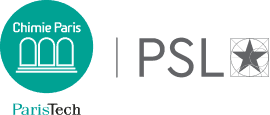
Thursday July 3 at 2:00 pm (Paris time), Room Charpak, ESPCI, entrance building, at LPEM in hybrid format: Heat propagation in liquid 3He and metallic Fermi liquids
by Kamran Behnia , Laboratoire de Physique et Etude de Matériaux, ESPCI, 75005 Paris, France
Normal liquid 3He inspired Landau’s Fermi liquid theory. What has been overlooked, however, is that fact that the agreement between this theory and the experimental data is restricted to very low temperature. On the other hand, the experimental data thermal conductivity can be explained as the sum of two contributions: one by quasi-particles and another by sound temperature [2]. The first component has been known for decades. The second is known as zero sound [2], but in the hydrodynamic limit, when the collision rate exceeds the sound frequency. Propagation of heat by sound in a quantum liquid shall not be a surprise given the longstanding relevance of the Bridgman formula for thermal conductivity of classical liquids [3]. The case of 3He has implications for understanding the temperature dependence of transport coefficients in metals.
by Kamran Behnia , Laboratoire de Physique et Etude de Matériaux, ESPCI, 75005 Paris, France
Normal liquid 3He inspired Landau’s Fermi liquid theory. What has been overlooked, however, is that fact that the agreement between this theory and the experimental data is restricted to very low temperature. On the other hand, the experimental data thermal conductivity can be explained as the sum of two contributions: one by quasi-particles and another by sound temperature [2]. The first component has been known for decades. The second is known as zero sound [2], but in the hydrodynamic limit, when the collision rate exceeds the sound frequency. Propagation of heat by sound in a quantum liquid shall not be a surprise given the longstanding relevance of the Bridgman formula for thermal conductivity of classical liquids [3]. The case of 3He has implications for understanding the temperature dependence of transport coefficients in metals.
[1] K. Behnia & K. Trachenko, Nature Commun. 15, 1771 (2024).
[2] F. Albergamo et al., Phys. Rev. Lett. 99, 205301 (2007).
[3] P. W. Bridgman, Proc. Am. Acad. Arts Sci. 59, 141–169 (1923).
Zoom link: https://espci.zoom.us/j/88398967112?pwd=jZcrancOraYhCKRcYTlJH1bAm0zHDc.1
ID: 883 9896 7112
Passcode: A.Leggett
ID: 883 9896 7112
Passcode: A.Leggett
